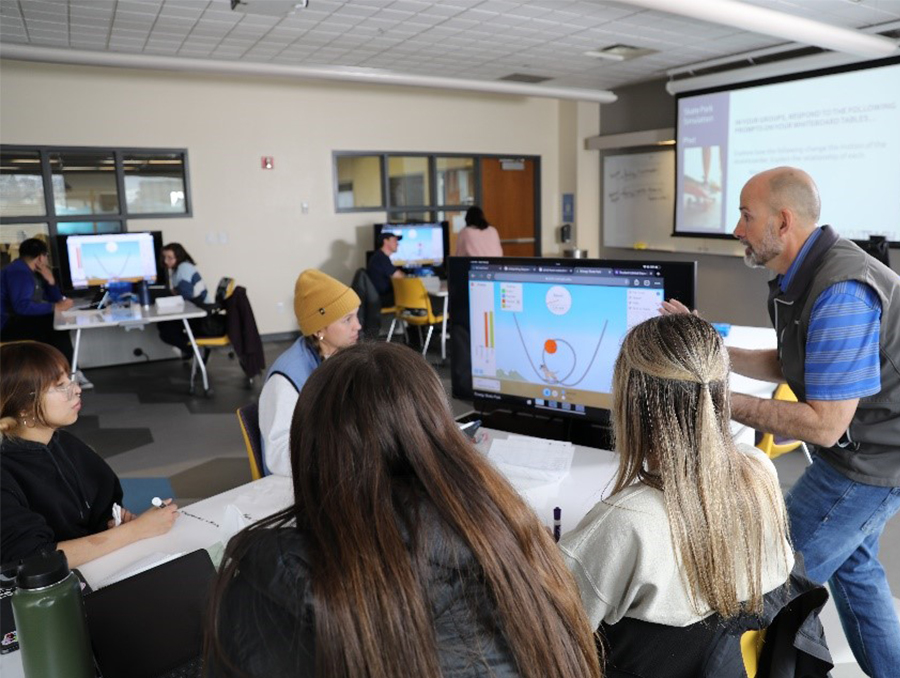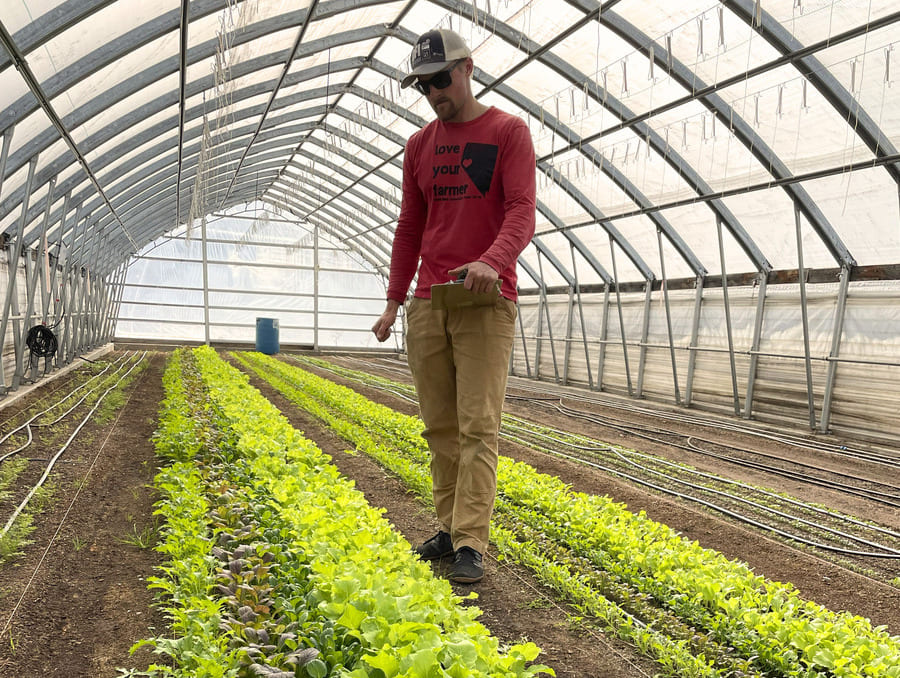The role of technology in education has become increasingly vital, bridging the accessibility gap and fostering inclusivity for students with diverse needs. NevadaTeach, a shared program that has the support of the College of Education and Human Development, College of Science, College of Agriculture, Biotechnology, and Natural Resources, and School of Public Health, recognizes this trend and has taken proactive steps to equip aspiring STEM educators with the necessary skills for technology integration in the classroom.
Beginning as early as the first semester in the NevadaTeach program, students are exposed to both high and low-tech technologies, catering to the diverse learning environments within the program and partnering school districts.
The program introduces various technologies to students, including simulations and games that reinforce learning objectives, promote problem-solving skills, and motivate students to achieve their goals. Collaborative tools are also emphasized, fostering teamwork and enabling students to collaborate on projects, share ideas and receive feedback.
"These technologies are deliberately integrated to involve complex concepts and skills to improve students' achievement and attainment of the content being learned. It enables our preservice teachers to make informed decisions and monitor student progress effectively to provide targeted interventions and personalized support to learners," NevadaTeach Master Teacher and Director of the Raggio Center for Advancement in (STEM)2, Mandi Collins said.
Technology plays a critical role in meeting the learning needs of each student by providing personalized, flexible, engaging, accessible, data-driven, collaborative and lifelong learning experiences.
"In the classroom, I am able to increase their digital fluency by incorporating more of the technology into my classroom teaching."
Collins also talked about the multitude of benefits of using technology in the classroom, "technology enables personalized and adaptive learning experiences that can be tailored to each student's unique needs, abilities and interests. Technology also has the potential to increase student engagement by providing interactive and immersive learning experiences which can enhance student motivation and interest in learning."
AJ Wolfe with the Digital Wolf Pack Initiative also stressed the importance of teaching students best practices for online safety "as reliance on technology increases, educating students about responsible technology use, online safety and digital citizenship becomes crucial."
Looking ahead to the next decade, technology is poised to continue playing a pivotal role in education. The pandemic highlighted the benefits of blended learning. Teachers will need to thoughtfully integrate technology into their classrooms, considering pedagogical principles, equity, and the specific needs of students.
To support preservice teachers, the College of Education and Human Development is renovating a classroom space designed to engage faculty, education majors and stakeholders in utilizing technology-rich practices to advance teaching, learning, research and service. This classroom serves as a hub for integrating 21st-century technologies and will prepare education majors for future classrooms.
While the initial phase of the classroom renovation is complete, additional funding is required to further enhance accessibility and collaboration.
"The classroom space will provide a vital role in promoting lifelong learning and professional development for our faculty, students and in-service educators,” Donald Easton-Brooks, Ph.D., Dean of the College of Education and Human Development, said. “The design principles will not only accommodate the needs of today's classrooms but will be adaptive for the classrooms of tomorrow by fostering a space that is multimodal and technology-rich. The classroom will be a space for professional learning to both occur and be produced."
The work being done by NevadaTeach and its preservice teachers is geared toward benefiting the next generation of learners. NevadaTeach's commitment to integrating technology in education prepares educators to meet the evolving needs of students and equips them with the necessary tools for success in the modern classroom. By embracing technology, future educators will be well-positioned to create inclusive, engaging, and effective learning environments for the next generation of learners.
NevadaTeach is a dual-degree program for undergraduate STEM majors at the University. Students with math or science majors can add a degree in secondary education and graduate in four years. NevadaTeach is for students interested in teaching secondary math or science and anyone interested in adding an extra career option to their STEM degree.
















